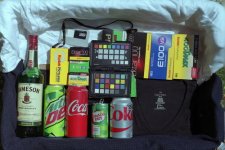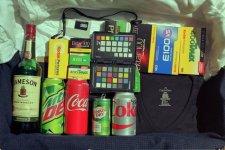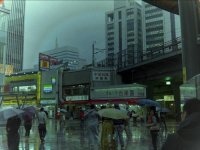charjohncarter
Veteran
You worked from a screenshot of my negative? Surprising that it turned out at all.
My ColorPerfect is a Photoshop filter. It has four options: TouchUp, ColorNeg, ColorPos, and PerfectRAW. I've only used ColorNeg.
So RAW -> MakeTiff -> Photoshop -> Filter... CF Systems... ColorPerfect... ColorNeg.
Wow, when I make a MakeTiff TIF file I can hardly see anything it is almost black. Then when I hit PerfectRAW it comes out so I don't even have to hit the white balance feature. The reason I didn't use your RAW file was it didn't open in PSE.
I'll have to try a MakeTiff TIFF file in ColorNeg??????










